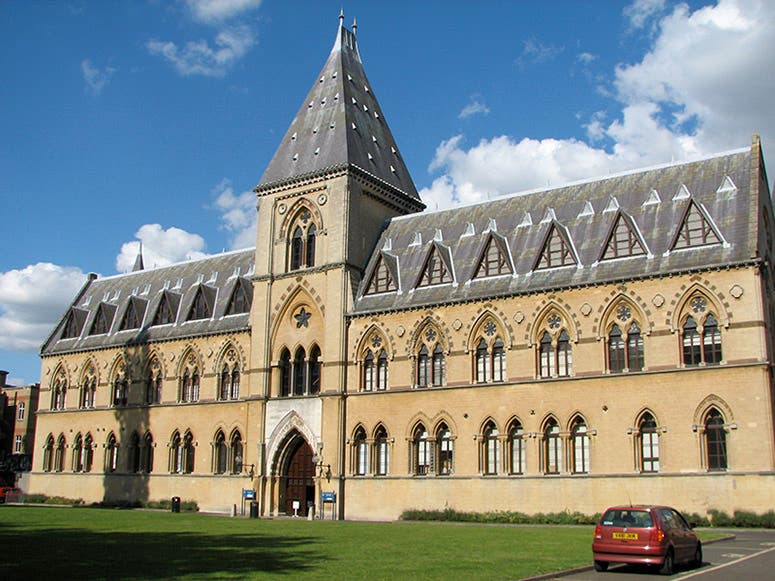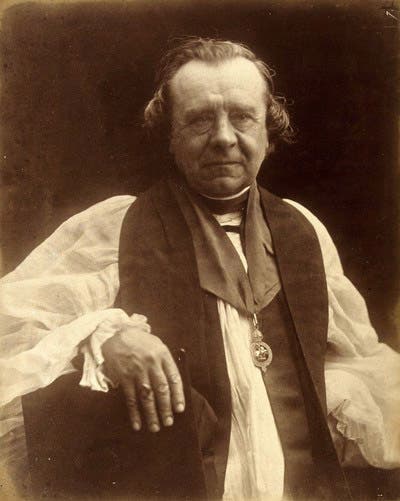Scientist of the Day - Samuel Wilberforce
Samuel Wilberforce, an English Anglican cleric, was born Sep. 7, 1805. Wilberforce rose to prominence in the Church of England, becoming Bishop of Oxford and Dean of Westminster in the same year, 1845. By all accounts, he was a gifted speaker, and he had some interest in science, since he was elected to Fellowship in the Royal Society the same year he was appointed Primate of Oxford. It was probably for these reasons that Wilberforce became involved in the special session of the annual meeting of the British Association for the Advancement of Science that took place at the Oxford Museum of Natural History on June 30, 1860, concerning Darwinian evolution. Today, Wilberforce is remembered for little else but the events of that day.
The Saturday morning session involved a number of speakers, including the American John William Draper and the botanist Joseph Dalton Hooker, and it was presided over by Darwin’s old teacher, John Henslow. But Wilberforce and Thomas H. Huxley are the two figures who have passed into legend. Wilberforce had been invited to offer his thoughts on the Church's reaction to Darwin's evolutionary theory. Huxley wasn't even an invited speaker for the Saturday session, but he was asked by Robert Chambers, the session organizer, to join the speakers on the dais in case he wanted to add anything, and Huxley, reluctantly, agreed.
Wilberforce spoke at some length about the Church's objections to Darwinism, trying to focus on scientific rather than theological issues. Huxley would have found it difficult to respond to that kind of general attack. Fortunately for Huxley, Wilberforce, by way of conclusion, turned to Huxley and playfully asked him whether it was through his grandmother or his grandfather that he traced his descent from a monkey. Huxley responded with his own general discussion of Wilberforce's criticisms, and then he concluded, that he would rather be related to an ape, than to a man who used his natural gifts of reason and eloquence to introduce ridicule into a serious scientific discussion. And the "Wilberforce-Huxley debate" was ready to enter into the history of evolutionary thought.
One of the odd things about this famous confrontation is how poorly documented it is. While vague accounts were recorded in several letters, diaries, and newspapers during the following two weeks, the episode entirely dropped from public discussion for over 20 years, with neither Darwin, Huxley, or Wilberforce ever mentioning it again. And then, between 1880 and 1900, the story was rediscovered, partially reinvented, and elevated to canonical status in the "science versus religion" wars, rivaled only by Galileo's condemnation by the Catholic Church for defending a sun-centered universe.
As the story is usually told, Wilberforce comes across looking like a fool, but he was anything but. He was one of four brothers, sons of William "The Emancipator" Wilberforce, the founder of the anti-slave-trade movement in England, and all the brothers were ardently opposed to slavery and were strong advocates for the equality of human races. The brothers were also part of the Tractarian movement at Oxford in the 1840s and 1850s, in which a number of Anglicans, led by John Henry Newman, sought first to return the English Church to the Roman fold, and when that failed, converted to Catholicism. Samuel saw his brothers, and many of his extended family, convert one by one to the Catholic faith, with only Samuel resisting, which must have been very traumatic, because to an Anglican, consigning oneself to the Pope meant consignment to everlasting hell.
Wilberforce died on July 19, 1873, of head injuries after falling from a horse. It was rather unkind of Huxley to remark, upon hearing of Samuel's death by mishap: "His end has been all too tragic for his life. For once, reality & his brains came into contact & the result was fatal." Granted, Huxley said this in a private letter to his closest friend and never intended it as fodder for the public grist mill, but it escaped, as such remarks tend to do, and has become part of the Wilberforce legacy.
A portrait of Wilberforce resides in the Royal Academy of Art London, painted in 1868 by George Richmond (first image). Richmond, ironically, also painted the most famous likeness of the young Charles Darwin, his wedding portrait of 1839. Julia Margaret Cameron also photographed Wilberforce in 1871 on the Isle of Wight (fourth image); it is a penetrating glimpse of the man, as Cameron’s photographs usually were.
There is a stele at Oxford, outside the museum, that commemorates the 1860 "debate" (fifth image). It was erected in 2010, on the 150th anniversary of the event. Its inclusion here reminds me to point out that after the famous encounter, the local newspapers missed the chance for one of the great headlines of all time. The front page of the Oxford Times for July 1, 1860, should have read: "Man not related to Monkeys, says Primate."
Dr. William B. Ashworth, Jr., Consultant for the History of Science, Linda Hall Library and Associate Professor emeritus, Department of History, University of Missouri-Kansas City. Comments or corrections are welcome; please direct to ashworthw@umkc.edu.










